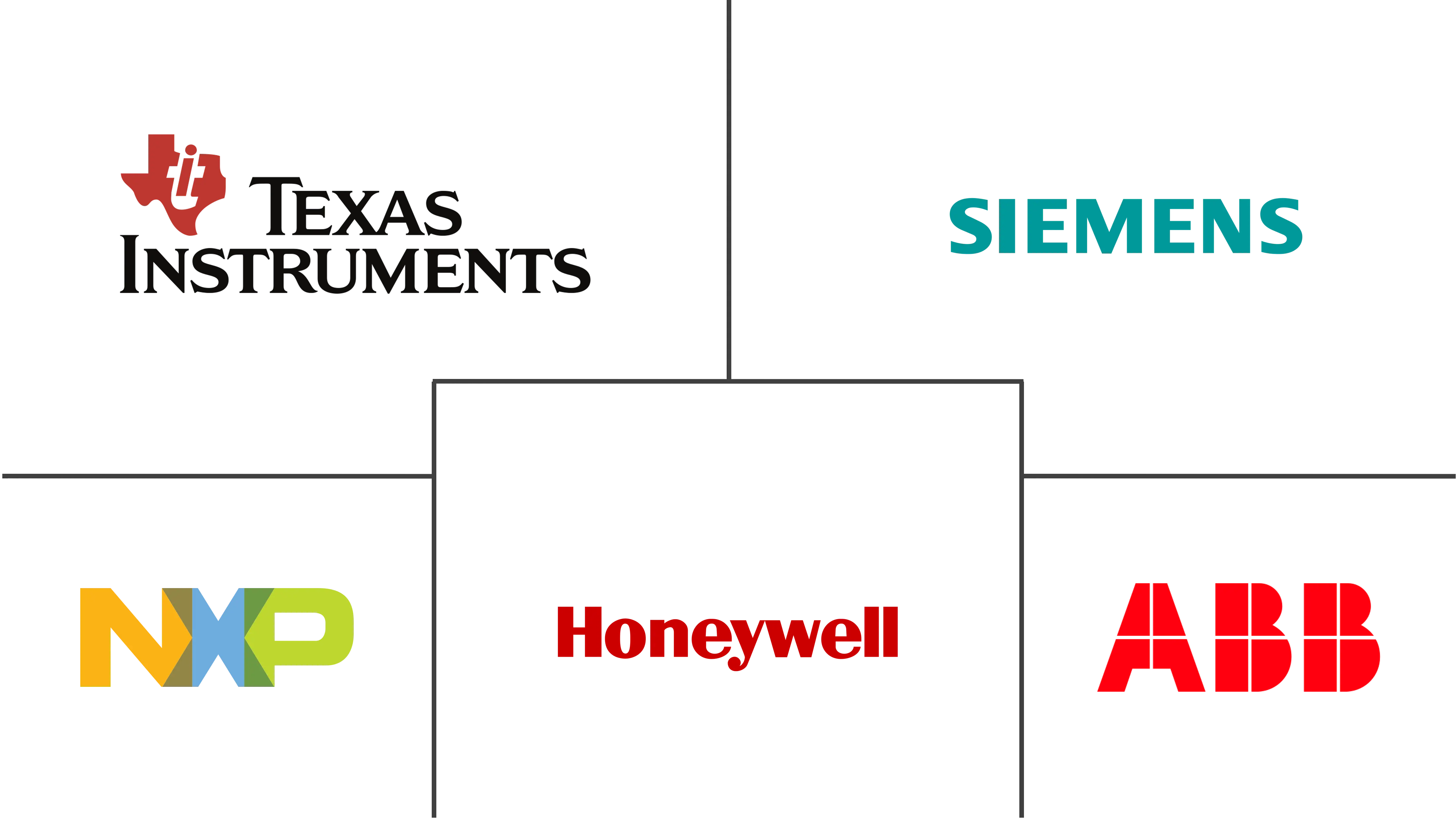Japan Sensor Market Size and Share
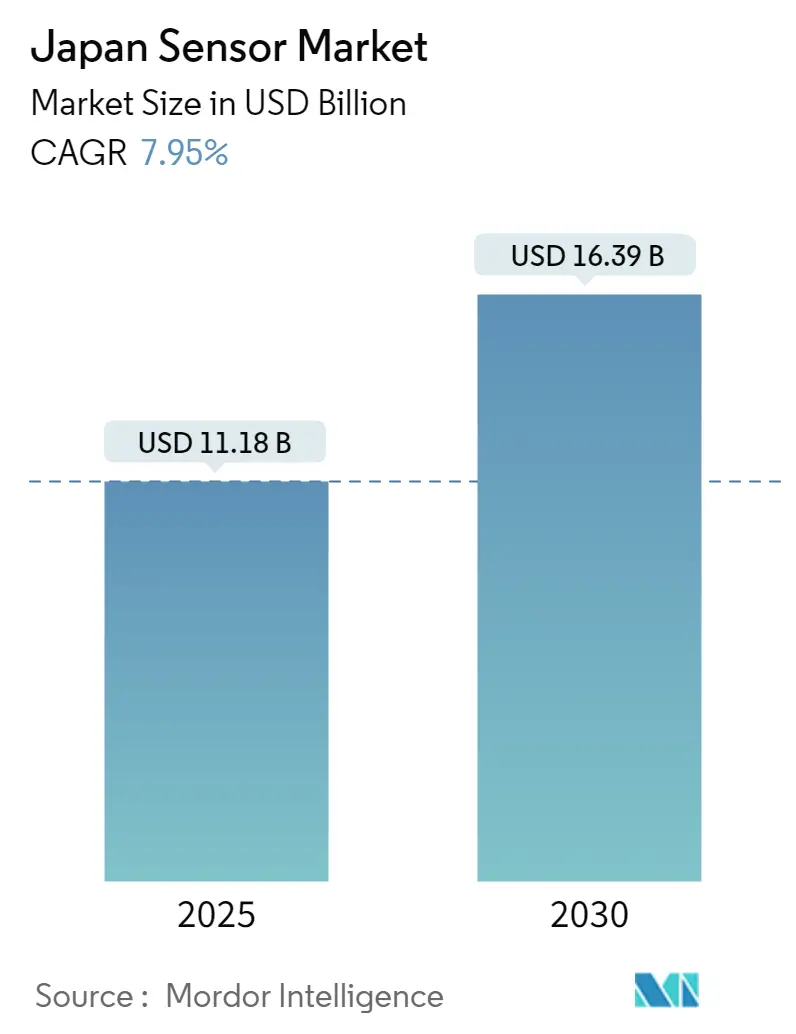
Japan Sensor Market Analysis by Mordor Intelligence
The Japan Sensor Market size is estimated at USD 11.18 billion in 2025, and is expected to reach USD 16.39 billion by 2030, at a CAGR of 7.95% during the forecast period (2025-2030).
The adoption of sensors has continuously increased due to technological developments in automotive, healthcare, industrial, and other sectors.
- The future switch of the Japanese smart city market to energy-efficient and conservation-related solutions in Japan may directly influence the demand for sensors from early adoption to mass adoption. The rising demand for home automation is driving the development of advanced sensors to reduce cost and power consumption.
- The demand for fitness and health monitoring devices is rising due to their frequent integration into everyday lives. The demand for smartwatches, activity trackers, and other personal digital health devices is growing. New sensors, such as Barometric pressure sensors, are being developed by companies that are ideal for applications such as embedding in watches, fitness bands, earphones, or smartphones to support fitness parameters, enable higher accuracy of physical activity, and allow enhanced analysis of activity being done.
- The government is taking several initiatives to support the adoption of robots in Japan, further propelling the demand for sensors. For instance, the "New Robot Strategy" was introduced in Japan to make the country the world's number one robot innovation hub, with more than USD 930.5 million in financial support provided by the Japanese government in 2022. Thus, with the rising production and deployment of robotics in the manufacturing sector, the sensor market is expected to observe rampant growth because robots require a wide range of sensors to operate effectively, and as the complexity and sophistication of robots increase, so does the need for more advanced and specialized sensors.
- Although integrating sensors increases the industrial automation level, it incurs an additional cost, limiting the use in cost-sensitive applications. In addition, the high development costs involved in the R&D activities to manufacture new products are a critical challenge, mainly for the cash-deficient small and medium-sized sensor manufacturers.
Japan Sensor Market Trends and Insights
Surging Demand in the Automotive Sector
- The growing demand for autonomous vehicles in Japan may support the market's growth over the forecast period. The sensor acquires external information through different means and transmits it to other components, making life easy for drivers.
- The sensor acts as an electronic device in various aspects of the car, such as its coolant system, temperature, oil pressure, vehicle speed, emission levels, and engine. It sends signals to the electronic control unit to make appropriate adjustments and warn the driver. There are various types of sensors used in automobiles, such as speed, parking, temperature, airflow, oxygen, and fuel temperature sensors.
- Sensors are used to ensure that the engine is maintained correctly. It also enables automatic control of specific functions such as headlights and windscreen wipers and easily detects faulty components in a vehicle. Increasing safety concerns, sustainability (zero emission), and vehicle electrification (e-mobility) are trends positively impacting the role of sensors in commercial and passenger vehicles.
- The Japanese government plans to provide incentives for deploying electric vehicles to reduce carbon footprint. It has invested heavily in developing an electric vehicle infrastructure. In Japan, the introduction of government subsidies for EV buyers to support the growing number of EVs has increased the number of EV charging stations, creating a high demand for sensors.
- According to JAMA, in 2022, approximately 6.57 million passenger cars were produced in Japan, down from about 6.62 million units in the previous year. The total domestic production volume reached about 7.84 million units, including buses and trucks next to passenger cars.
- Several automobile manufacturers are focusing on expanding their footprints in Japan, supporting market growth. For instance, in July 2023, BYD announced entry into Japan's passenger vehicle market, planning to offer the Atto 3 model. Sales of the BYD Atto 3 were expected to begin in January 2023. The second model was expected to be the BYD Dolphin, scheduled for mid-2023, and the third is expected to be the all-new BYD Seal, scheduled for the second half of 2023.
- Leading industry players are introducing technologically advanced sensors to meet the growing demand from the automotive sector. For instance, in January 2022, Texas Instruments announced an expansion of its automotive offerings to help automakers improve ADAS sense objects by adding its new AWR2944 radar sensor to the company's extensive portfolio of embedded and analog processing products and technologies. This sensor can monitor blind spots, detect objects, and efficiently navigate turns and corners, paving the way for automakers to achieve their vision of a collision-free future.
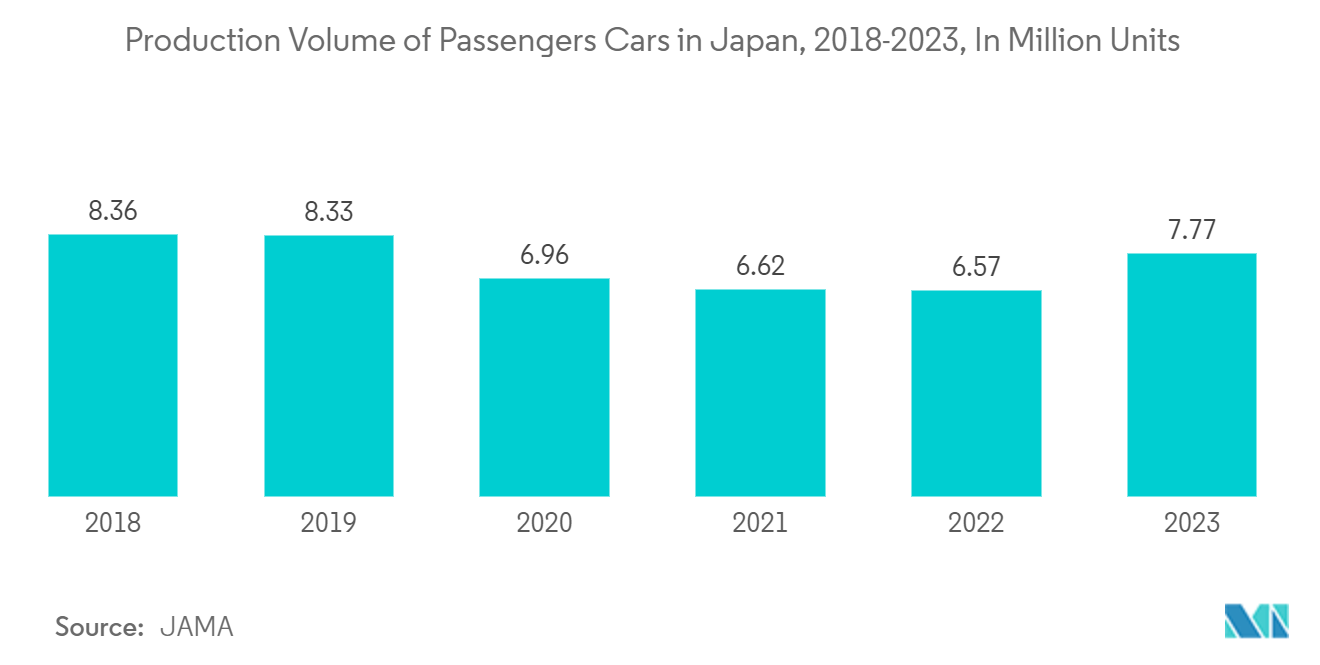
Growing Adoption of Industrial Robots
- The growing adoption of industrial robots in various industries may support market growth. Nowadays, robots perform multiple tasks in electronics, industrial, and automotive manufacturing companies. Industrial robots use many sensors to achieve superior manipulation and control in industrial automation production methods. The robot's sensors allow it to react flexibly to its environment, and cutting-edge sensor technology takes its IQ to new heights.
- Sensor technology is one of the most important applied sciences for industrial robots. It allows robots to navigate and perceive environmental changes and make accurate decisions in challenging situations, just like humans. In the case of robots, especially in industrial automation, sensors must correctly provide important data to accomplish the complex processes involved. Industrial robots comprise several sensors for proper control and operation in industrial automation processes.
- Japan is known as a prominent industrial robot supplier and has been aiding in the sensor market's growth. Industry 4.0 has fueled new technologies, such as collaborative robots. AI has allowed industries to use robots to streamline many processes, increase efficiency, and eliminate errors. Increased workplace safety and improved production capabilities have further driven investment initiatives in robotic systems.
- The country has a predominant market share in the robot manufacturing industry and installed methods where industrial robots are used to assemble robots. The country also houses multiple leading companies like Nippon, responsible for 47% of the global robot production, as per IFR.
- In December 2023, domestic shipments of consumer electronics in Japan, as reported by the Japan Electronics and Information Technology Industries Association (JEITA), hit a value of around JPY 107 billion (USD 0.68 billion).
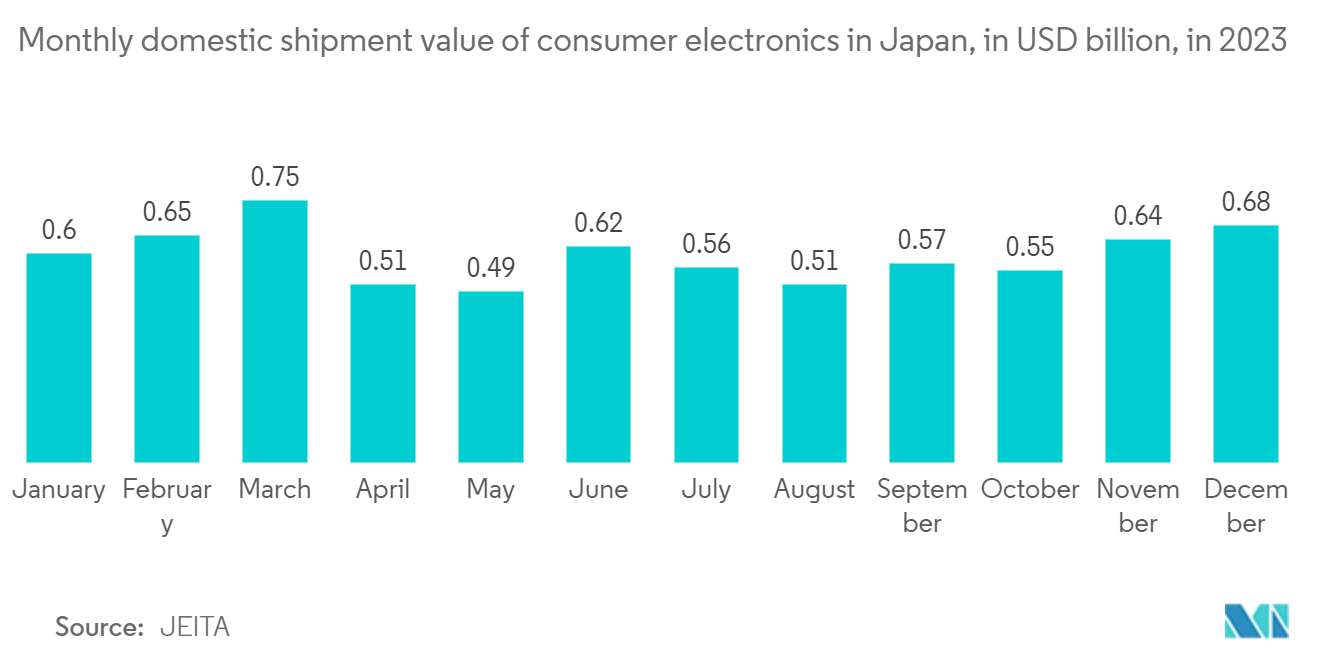
Competitive Landscape
The Japanese sensors market is highly competitive because most leading brands are developing new technologies and engaging in fierce competition. Brand identity plays a huge role in the market. The established players have an edge over the competition due to huge brand equity. Significant players include ABB Limited, Honeywell International Inc., Texas Instruments Incorporated, Siemens AG, and NXP Semiconductors BV. Some of the recent developments in the market are:
- January 2023: NXP Semiconductors announced the launch of a new industry-first 28nm RFCMOS radar one-chip IC family for next-generation ADAS and autonomous driving systems. The new SAF85xx one-chip family combines NXP's high-performance radar sensing and processing technologies into a single device, providing tier ones and OEMs with new flexibility in addressing short, medium, and long-range radar applications for serving more challenging NCAP safety requirements.
- September 2022: STMicroelectronics announced the next-generation dual image sensor to monitor the entire vehicle interior covering the driver and all passengers. The new image sensor will work for applications, including child-left detection, passenger safety belt checks, gesture recognition, vital-sign monitoring, and high-quality picture/video recording.
- September 2022: OSRAM announced the extension of its family of spectral sensors to perform quantitative, digitized point-of-care diagnostics for fluorescence and colorimetric-based assays.
Japan Sensor Industry Leaders
-
Honeywell International Inc.
-
ABB Limited
-
Siemens AG
-
Texas Instrument Incorporated
-
NXP Semiconductors BV
- *Disclaimer: Major Players sorted in no particular order
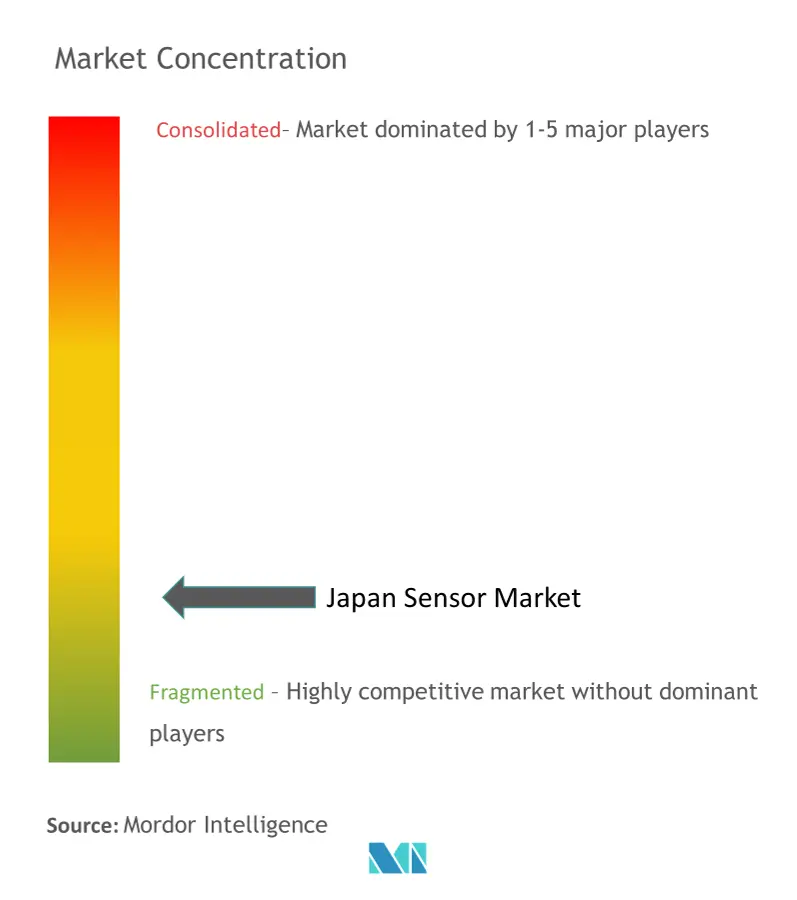
Recent Industry Developments
- April 2024: ABB launched the ProcessMaster FEW630, an electromagnetic flowmeter tailored for precise water and wastewater flow measurement in municipal and industrial settings. This launch underscores ABB's commitment to streamlining the selection, operation, and maintenance of its flowmeters, aligning with the dynamic demands of the water and wastewater sector.
- October 2023: Niterra, a Japanese player recognized for its NGK and NTK brands, focusing on ignition system components and injection system sensors, launched its latest addition: the MAP (Manifold Absolute Pressure) sensors, now part of the NTK brand.
Japan Sensor Market Report Scope
Sensors are devices that measure physical inputs from the environment and convert them into data that can be interpreted by machines or humans.
The Japanese sensor market is segmented by type (temperature, pressure, level, flow, proximity, environmental, chemical, inertial, magnetic, and vibration), mode of operation (optical, electrical resistance, biosensor, piezoresistive, image, capacitive, piezoelectric, lidar, and radar), end-user industry (automotive, consumer electronics (smartphones, tablets, laptops, and computers, wearable devices, and smart appliances or devices), energy, industrial, medical and wellness, construction, agriculture, and mining, aerospace, and defense). The market sizes and forecasts are provided in terms of value (USD) for all the above segments.
| Temperature |
| Pessure |
| Level |
| Flow |
| Proximity |
| Environmental |
| Chemical |
| Inertial |
| Magnetic |
| Vibration |
| Other Parameters Measured |
| Optical |
| Electrical Resistance |
| Biosenser |
| Piezoresistive |
| Image |
| Capacitive |
| Piezoelectric |
| LiDAR |
| Radar |
| Other Modes of Operation |
| Automotive | |
| Consumer Electronics | Smartphones |
| Tablets, Laptops, and Computers | |
| Wearable Devices | |
| Smart Appliances or Devices | |
| Other Consumer Electronics | |
| Energy | |
| Industrial and Other | |
| Medical and Wellness | |
| Construction, Agriculture, and Mining | |
| Aerospace | |
| Defense |
| By Parameters Measured | Temperature | |
| Pessure | ||
| Level | ||
| Flow | ||
| Proximity | ||
| Environmental | ||
| Chemical | ||
| Inertial | ||
| Magnetic | ||
| Vibration | ||
| Other Parameters Measured | ||
| By Mode of Operations | Optical | |
| Electrical Resistance | ||
| Biosenser | ||
| Piezoresistive | ||
| Image | ||
| Capacitive | ||
| Piezoelectric | ||
| LiDAR | ||
| Radar | ||
| Other Modes of Operation | ||
| By End User Industry | Automotive | |
| Consumer Electronics | Smartphones | |
| Tablets, Laptops, and Computers | ||
| Wearable Devices | ||
| Smart Appliances or Devices | ||
| Other Consumer Electronics | ||
| Energy | ||
| Industrial and Other | ||
| Medical and Wellness | ||
| Construction, Agriculture, and Mining | ||
| Aerospace | ||
| Defense | ||
Key Questions Answered in the Report
How big is the Japan Sensor Market?
The Japan Sensor Market size is expected to reach USD 11.18 billion in 2025 and grow at a CAGR of 7.95% to reach USD 16.39 billion by 2030.
What is the current Japan Sensor Market size?
In 2025, the Japan Sensor Market size is expected to reach USD 11.18 billion.
Who are the key players in Japan Sensor Market?
Honeywell International Inc., ABB Limited, Siemens AG, Texas Instrument Incorporated and NXP Semiconductors BV are the major companies operating in the Japan Sensor Market.
What years does this Japan Sensor Market cover, and what was the market size in 2024?
In 2024, the Japan Sensor Market size was estimated at USD 10.29 billion. The report covers the Japan Sensor Market historical market size for years: 2019, 2020, 2021, 2022, 2023 and 2024. The report also forecasts the Japan Sensor Market size for years: 2025, 2026, 2027, 2028, 2029 and 2030.
Page last updated on:
Japan Sensor Market Report
Statistics for the 2025 Japan Sensor market share, size and revenue growth rate, created by Mordor Intelligence™ Industry Reports. Japan Sensor analysis includes a market forecast outlook for 2025 to 2030 and historical overview. Get a sample of this industry analysis as a free report PDF download.
